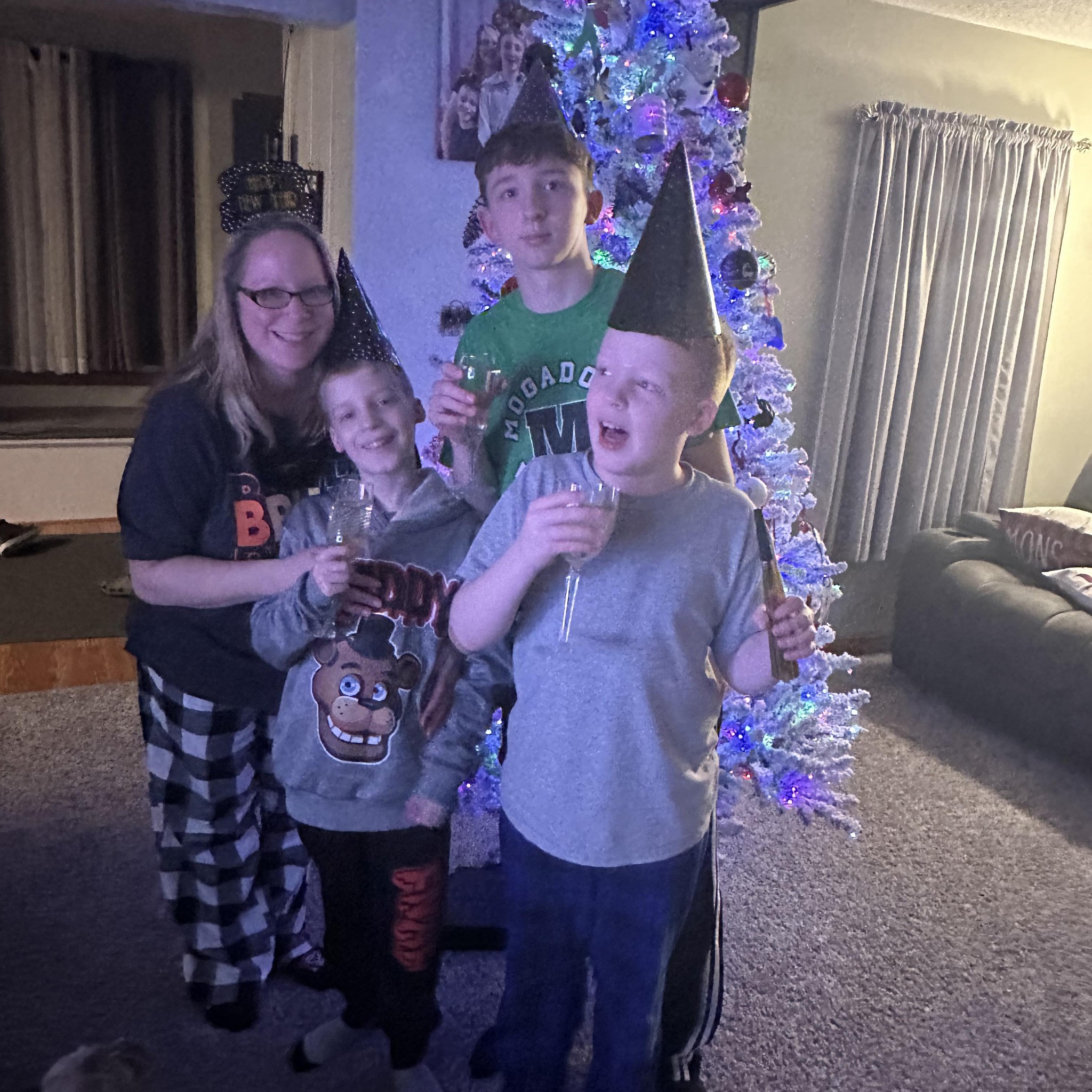
bermudaflash
via Google
My experience with Sensei Kane has been nothing short of awesome! Learning new skills and losing weight at the same time. His classes are detailed and focused on form over power to overtake an opponent. I love the comradery of my classmates they're all super nice and welcoming. Highly recommend coming in to check it out if you have a love for martial arts or are looking to learn.

Mackenzie Schleper
via Google
I first met Matt Kane as a student in his BJJ class at Kent State in 2018. I have been a martial artist for the majority of my life, and I figured it was time to branch out and try a new one. Since then, I have found a new passion with new goals to strive towards.
I have nothing but praise for Matt Kane and Paragon. He is supportive, educational, and hilariously goofy, ensuring that every class is engaging and dynamic. If you’re looking to try something new, no matter your age or ability, there is a place here for you at Paragon Martial Arts.

Devin Tracy
via Google
My husband and I were referred to Paragon from a friend. We started taking him to classes in November of 2023 and haven't looked back! Love all the teachers and kids! They all work so well together.

Audi Os
via Google
I am very pleased with enrolling my child at Paragon. She’s learning quality self defense that will help her protect herself should she ever be in the situation to need to and she is also learning good life skills to help build a good character foundation within herself. She has also made friends and her confidence has improved. Matt is a great teacher and is amazing with kids. I’m very pleased and will continue to be a part of the Paragon family.
I am updating this review as well now that I have enrolled my son as well. I am happy to see each week the progress and growth in him. He works very hard and it great to see his focus and dedication put into something besides electronics. He’s learning life lessons about confidence and honesty and values we all want our children to have.
Paragon provides a place for everyone where they can grow and be encouraged and supported and accepted.

Mary Shreve
via Google
I have been training here for around 3-4 years now, and I can see a change. The environment is awesome. It makes you feel like you belong there. While this place does teach martial arts and fitness, it also teaches character. I have grown so much in my confidence, leadership skills, and more. It is really a great place to train and make friends.

JESSICA SISSON
via Google
Sensei Matt is so patient and sets a strong example for my five year old son. He is learning discipline, respect, strength, balance, and so much more! I love that they are rewarded with a game at the end of class. My son really looks forward to his time here! The gym is very clean, organized, professional. Pricing is affordable and fair. I really can’t say enough good things!

kstavmma
via Google
Matt is genuinely a great person and a great instructor. He does such a great job weaving in life lessons with the martial arts. The martial arts Matt trains the kids on is a great blend of multiple forms such as muy thai, boxing, karate, and more. Check him out if you’ve been considering Martial Arts for the kids or even yourself! I highly recommend him

Tiffany K
via Google
In the years my daughter has been training at Paragon and with Sensei Matt I have watched her grow into a confident young woman and leader. I'm so grateful for all the skills she has learned. This place is like a family where everyone is welcome and included.

S Sumner
via Google
This is a wonderful place. The team here really focuses on each student as an individual to find their natural strengths and build on areas of improvement. They promote teamwork and teach leadership skills. My daughter has been coming here since the school began, following the owner from his old school. She loves being a part of the leadership team for younger children. Her confidence has vastly improved over the years as a result of what she learns here.

Daniel Giza recommends Paragon Martial Arts & Fitness
via Facebook ·
Great place to learn martial arts with a tremendous instructor Matt Kane that takes the time to work with you and provide that needed guidance no matter the experience level!

Amanda Gray recommends Paragon Martial Arts & Fitness
via Facebook ·
Paragon Martial Arts is an amazing place to learn!! My daughter has been learning from instructor Matt for awhile now. As a parent I am very pleased with the amount of self confidence and discipline that has been instilled in my child through out her time in class. I can also say that I am confident my child has the ability to protect herself through her training and that is something that is worth every minute we spend in class!!! If you are looking for a place to learn self defense by an instructor that knows his stuff and cares for each individual and their success this is the place to go!!

Julie Haas recommends Paragon Martial Arts & Fitness
via Facebook ·
Sensei Matt is thorough and energetic! He’s excellent with the kids he teaches and I would recommend Paragon Martial Arts to anyone wishing to learn self-defense!

Treasure Dianne Tvaroch recommends Paragon Martial Arts & Fitness
via Facebook ·
I really enjoy training at Paragon Martial Arts and Fitness! The instructor makes every class fun! I always have a good time!

Kristyn Posten recommends Paragon Martial Arts & Fitness
via Facebook ·
Both my boys love their classes. My youngest son has autism. Matt has show so much wisdom in working with him. He gently challenges him and show great balance with him. My oldest son is thriving in class as well. Matt teaches responsibility as well. Good stuff

Allison Johnson recommends Paragon Martial Arts & Fitness
via Facebook ·
Paragon is an awesome place for learning martial arts! The adult Brazilian Jiu Jitsu classes are great for beginners and Matt is a great teacher! I’ve learned a lot and had a lot of fun along the way.

Sarah Santa Boyd recommends Paragon Martial Arts & Fitness
via Facebook ·
The kids self defense class has been awesome. Watching my kids learn how to defend and stick up for themselves has been so gratifying. I also take the koreboxing class which has been whipping me back into shape. loving the results. 100% worth it.

Shannon Marullo Ahlstrand recommends Paragon Martial Arts & Fitness
via Facebook ·
I think it is fair to say that people most often become emotionally engaged and mentally committed to any kind of training studio because of the people and the leader who sets the culture of community … in addition to the expertise. This has never been more true than that of Matt Kane and Paragon Martial Arts. Not only is he a master sensei at everything he does, but his caring, sincere, down to earth warmth and personal passion for his craft that makes it so easy and so motivating to come again and again- and so enticing to learn more and more from him. He breaks things down into pieces so manageable that you find yourself doing things you'd never dream in under an hour. He is patient, encouraging, always positive and always with good humor. Since joining less than a year ago - I’ve recorded 4 film fighting scenes & learned dozens of self defense tactics that make me feel more confident as a female freelance artist who often travels alone. Matt creates a family-friendly and family-like environment and if you are an adult who feels shy or is wondering if a self defense or fighting class is right for you or or fitness level - Matt will allow you feel like you were meant to be there from the moment you arrive. He is the best there is and you will wonder why it took you so long to get there!

Kiersten Holman recommends Paragon Martial Arts & Fitness
via Facebook ·
Love training at this facility! The adult self defense class has helped me gain knowledge and skills to improve everyday safety, and is always a fun time learning how to protect my self and others! The Korebox class is a great way to workout while still having fun, every week is a new work out so it never gets boring! The instructor is knowledgeable on what he teaches and makes everyone feel welcomed! The environment is phenomenal and it has been fun getting to connect with other members over the last couple of years!

Tricia Brophy recommends Paragon Martial Arts & Fitness
via Facebook ·
My 13 year old son was being bullied in Middle School. Sensei Matt has given my son the tools and confidence to first mentally defend himself and physically defend himself if needed as a last resort! My son NEVER wants to miss a class! I got my fun and happy kid back! The instructors are all knowledgeable and make learning fun for everyone!!!! We LOVE Paragon!

Judy Sebek Koerner recommends Paragon Martial Arts & Fitness
via Facebook ·
I love Paragon Martial Arts and Sensei Matt Kane! Matt truly creates a positive environment where everyone of all ages and skill levels feel welcome and valued. The adult self-defense class has enhanced my stamina, balance, coordination and overall strength. Not to mention self-confidence and respect for martial arts. Soon I will test for my Orange Belt! I can't believe the progress I've made in my first year. Personally, I don't see an end in sight, I see a lifelong journey! Thank you Sensei Matt!

Ben Ostapiw recommends Paragon Martial Arts & Fitness
via Facebook ·
I would 100% recommend Paragon Martial Arts to anyone looking to learn self defense. Especially the kids class. Matt is an amazing teacher and Sensei. He always carries himself in a positive and professional manner and really tries to instill not only a good technique on the mat but also off as well.

Jim Shreve recommends Paragon Martial Arts & Fitness
via Facebook ·
If you want to learn common sense self defense that works ... Paragon is the place to be ...

Harley Tipton recommends Paragon Martial Arts & Fitness
via Facebook ·
Great studio, great classes, lots of fun.























